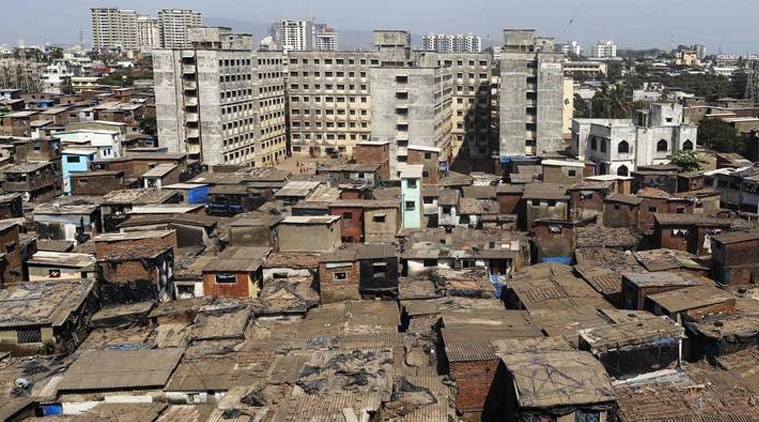Stay updated with the latest - Click here to follow us on Instagram
HC seeks govt reply on new slum rehab plan
The proposal says it is possible to rehabilitate a slum population of 48 lakh and generate additional 4 lakh affordable houses.
 Under the SRA model, developers, who house slum residents vertically on a portion of the encroached plot, are allowed to build big apartments for sale on the remaining plot. (Source: Reuters photo)
Under the SRA model, developers, who house slum residents vertically on a portion of the encroached plot, are allowed to build big apartments for sale on the remaining plot. (Source: Reuters photo)
In what could be an alternative to the unsuccessful Slum Rehabilitation Authority (SRA) scheme, the Bombay High Court has admitted a proposal for a new slum redevelopment model that envisages creating more open spaces, low-density settlements and additional affordable housing.
The division bench of Chief Justice Mohit Shah and Justice BP Colabawalla has given the state government three weeks to reply on the submission made by Nivara Hakk Welfare Centre in course of hearing a petition filed by NGO Citispace on encroachments on reserved open spaces. The proposal says it is possible to rehabilitate a slum population of 48 lakh and generate additional 4 lakh affordable houses while clearing 14.26 sq km encroached land for reserved open spaces, amenities and roads. The estimate of slum population excludes those living in Dharavi, Sanjay Gandhi National Park and airport land where redevelopment projects are already under way.
Under the SRA model, developers, who house slum residents vertically on a portion of the encroached plot, are allowed to build big apartments for sale on the remaining plot. As incentive in addition to the land, they are also given an FSI of 3 for such projects which, in cases where the density exceeds 650 tenements per hectare, can go as high as 4.
The submission made by Nivara Hakk proposes that within the existing SRA model where private developers get incentives for redeveloping slums in-situ, the government should restrict the maximum density to 500 tenements per hectare. Presently, the average densities of slums are 300 tenements per hectare, which post-SRA projects increase manifold, going up to 1250. “The existing slum residents can be housed in seven-storey structures as against the current practice of 15-plus storeys. If, after that, the developer is unable to consume his entire sale component while keeping the density within the cap, he should be granted transfer of development rights (TDR).
This TDR can then be sold by him to the government which will maintain a bank,” architect P K Das from Nivara Hakk said, adding the TDR can be purchased by developers who are developing low-density slum plots and require the TDR to attain the permitted density limits.
Moreover, the proposal states, all open spaces and amenities within the layout must be proportionate to the number of rehabilitation and sale units and accessible to both. For the purpose of affordable housing, the proposal says, the government must limit the sizes of sale component to 300-750 sq ft in area. To this end, slum sprawls, which presently account for 15 per cent of the total developable 244 sq km land mass of Mumbai, have to be reserved as affordable housing in the Development Plan, which should incorporate the slum master plan. The BMC, which is in the process of preparing the DP 2014-2034, has presently excluded all slum land from its land use plan.
shalini.nair@expressindia.com







